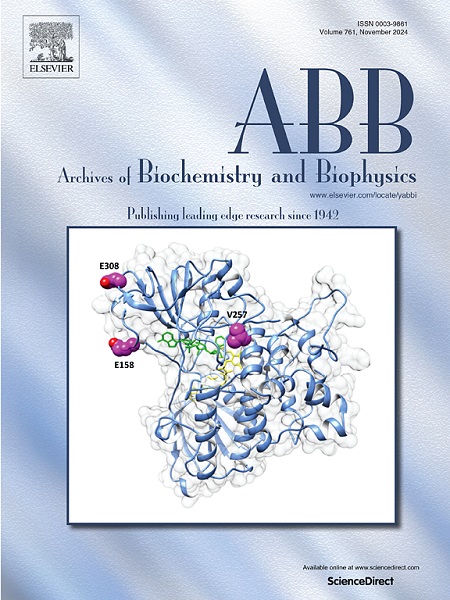Discovery of anti-tumor small molecule lead compounds targeting the SH3 domain of c-Src protein through virtual screening and biological evaluation
IF 3.8
3区 生物学
Q2 BIOCHEMISTRY & MOLECULAR BIOLOGY
引用次数: 0
Abstract
c-Src, also known as cellular Src, is a non-receptor tyrosine kinase that plays a crucial role in various cellular processes, including cell proliferation, adhesion, and migration. Its dysregulation has been implicated in the development and progression of several diseases, particularly cancer. Current therapeutic agents targeting c-Src are primarily small molecules binding to its kinase domain. However, drug resistance often reduces the effectiveness of these drugs. The SH3 domain of c-Src is a highly conserved functional region with a low propensity for developing drug resistance, whereas there are no existing anti-cancer drugs specifically binding to this domain. In this study, structure-based virtual screening and thermal shift experimental verification identified three molecules that showed potent binding affinity with SH3 domain of c-Src. Subsequent kinase activity assay validated the inhibitory activity of these compounds against c-Src, with IC50 values ranging from 60.42 to 122.2 nM. Next, cell-level assays and preliminary study were conducted to further evaluate the efficacy of the identified active compounds. In conclusion, the present work has provided new chemical templates as lead structures for the future development of new antitumor therapeutics targeting the c-Src SH3 domain to overcome drug resistance.

通过虚拟筛选和生物学评价发现靶向c-Src蛋白SH3结构域的抗肿瘤小分子先导化合物。
c-Src也被称为细胞Src,是一种非受体酪氨酸激酶,在细胞增殖、粘附和迁移等多种细胞过程中起着至关重要的作用。它的失调与几种疾病的发生和发展有关,特别是癌症。目前针对c-Src的治疗药物主要是结合其激酶结构域的小分子。然而,耐药性往往会降低这些药物的有效性。c-Src的SH3结构域是一个高度保守的功能区域,耐药倾向较低,目前尚无抗癌药物特异性结合该结构域。在本研究中,基于结构的虚拟筛选和热移实验验证鉴定了三个与c-Src的SH3结构域具有强结合亲和力的分子。随后的激酶活性测定证实了这些化合物对c-Src的抑制活性,IC50值在60.42 ~ 122.2 nM之间。接下来,进行细胞水平实验和初步研究,进一步评估鉴定的活性化合物的功效。总之,本研究为未来开发新的靶向c-Src SH3结构域的抗肿瘤药物提供了新的化学模板作为先导结构,以克服耐药性。
本文章由计算机程序翻译,如有差异,请以英文原文为准。
求助全文
约1分钟内获得全文
求助全文
来源期刊

Archives of biochemistry and biophysics
生物-生化与分子生物学
CiteScore
7.40
自引率
0.00%
发文量
245
审稿时长
26 days
期刊介绍:
Archives of Biochemistry and Biophysics publishes quality original articles and reviews in the developing areas of biochemistry and biophysics.
Research Areas Include:
• Enzyme and protein structure, function, regulation. Folding, turnover, and post-translational processing
• Biological oxidations, free radical reactions, redox signaling, oxygenases, P450 reactions
• Signal transduction, receptors, membrane transport, intracellular signals. Cellular and integrated metabolism.
 求助内容:
求助内容: 应助结果提醒方式:
应助结果提醒方式:


